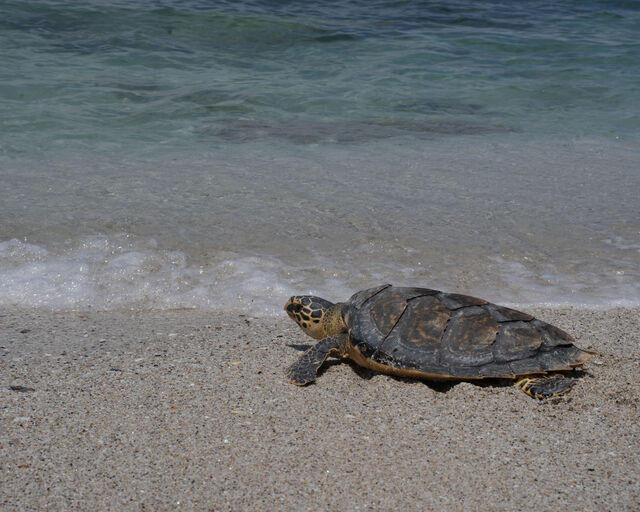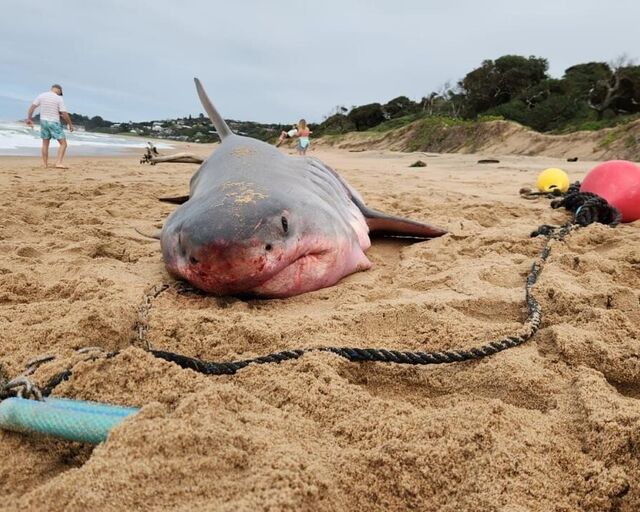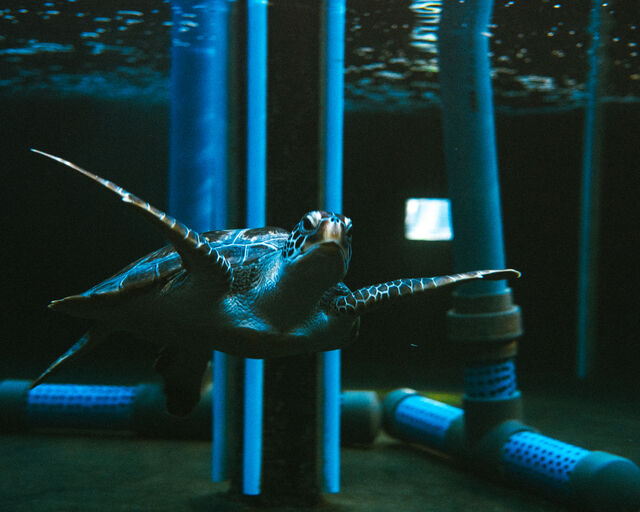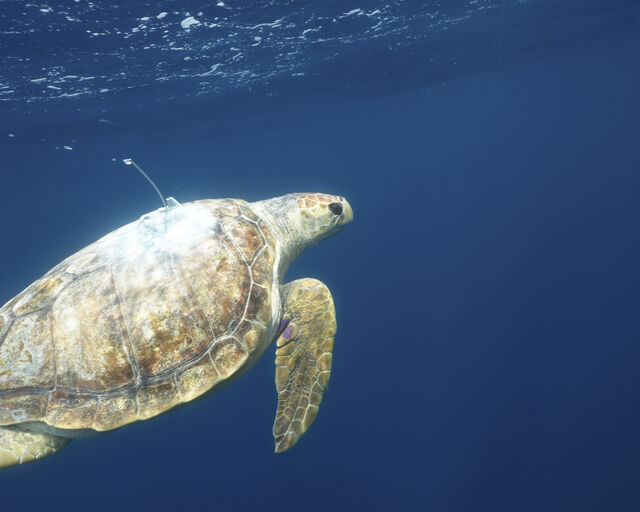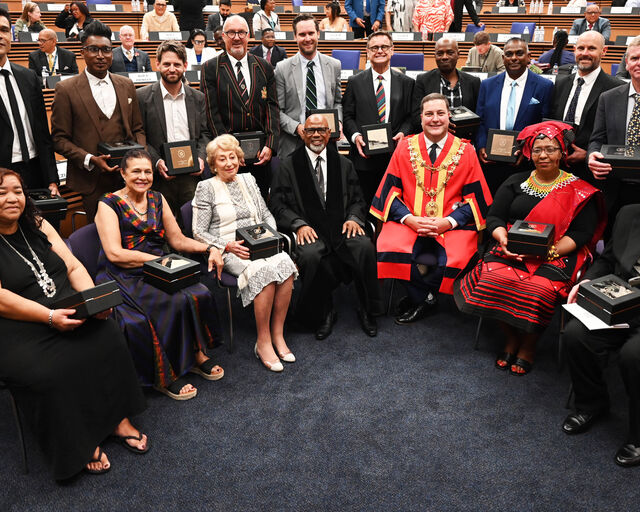Our Turtle Conservation Centre recently welcomed a new addition to the rehabilitation space – a large male loggerhead turtle.
On 8 February 2025, a member of the public alerted our Turtle Rescue Network to a large turtle washed ashore in Witsand. Thankfully, CapeNature quickly arrived on the scene while our Turtle Rescue Network Coordinator arranged for a lift to the Turtle Conservation Centre. We are also grateful to Mike Beyer, who drove the turtle for the bulk of the journey.
Once the turtle arrived at the Turtle Conservation Centre, the team leapt into action to provide first response care and get them comfortable and on the path to recovery. The team quickly discovered the turtle is male when he had relaxed somewhat and revealed his enormous tail. Remember that male and female turtles are physically almost identical until adulthood, when the tell-tale length of their tails begins to differentiate them.
On arrival, this big boy weighed around 75kg with an approximate length of 82cm (nearly a metre!). He also had hundreds of travellers attached to his body...
Barnacles reveal the turtle’s travels!
The turtle was absolutely covered in leeches, their larvae, and two interesting barnacles.
When the team didn’t recognise the barnacles as South African, they were later identified as originating from the Gulf of Mexico and the Mediterranean Sea. This is a fascinating insight into this big boy’s movements – he must have travelled a considerable distance to have stranded in South Africa (possibly about 14 000km)!
Known as “turtle barnacles”, Chelonibia testudinaria most commonly live as symbionts on loggerhead turtles. They are typically found on the front central portion of the carapace – this is where the greatest water flow (and best filter feeding opportunities) is found as the turtle moves through the ocean.
With “herbs and spices” as the naming theme for this year’s adult turtles, the team was further inspired by these faraway barnacles and named their latest patient Habanero.
While the barnacles had not harmed Habanero’s health, the leeches certainly had. Our vet, Dr Bernice van Huyssteen, realised that the leeches had caused Habanero to be severely anaemic. This explained why he was so weak when he arrived at the Turtle Conservation Centre. Dr Bernice decided on a course of iron support medication to help Habanero recover, and the team set about de-leeching him.
The de-leeching process was painstaking – as well as hundreds of adult leeches, there were thousands of eggs all over Habanero’s body. The team spent hours at a time carefully removing the leeches with tweezers. It was particularly important to do this as hygienically as possible so the leeches couldn’t infiltrate the rest of the Turtle Conservation Centre and the Two Oceans Aquarium. Of course, the team did an incredibly thorough job, and Habanero was soon leech-free. Thanks to being free of the parasites, his blood levels slowly started to recover as he gained strength, and his appetite improved hugely!
Habanero's elbow problems
However, Habanero’s troubles weren’t quite over. Once he had recovered his strength, the turtle team began to notice that he was favouring his left elbow, and radiographs revealed that he had osteomyelitis. Osteomyelitis is a bone infection caused by bacteria, often causing pain, inflammation, and other complications.
Following this discovery, our veterinary team conducted a “joint tap” or aspiration to sample the active bacteria in Habanero’s elbow. After placing the bacteria in a culture, Dr Bernice was able to identify its type and therefore, outline an appropriate treatment plan. Thankfully, the joint tap had positive results, and Habanero was started on a course of antibiotics and pain therapy to mitigate the infection. The team is hopeful that he will recover well.
While Habanero’s rehabilitation is currently ongoing, the turtle team is proud of his progress so far and has high hopes for his continued healing. An environmental enrichment programme has been tailored to his journey – he’s done well with activities like frozen enrichment and foraging simulations.
One day, when he is ready, Habanero will be released back into his ocean home!
Related News
Sign up to our Newsletter
Receive monthly news, online courses and conservation programmes.
